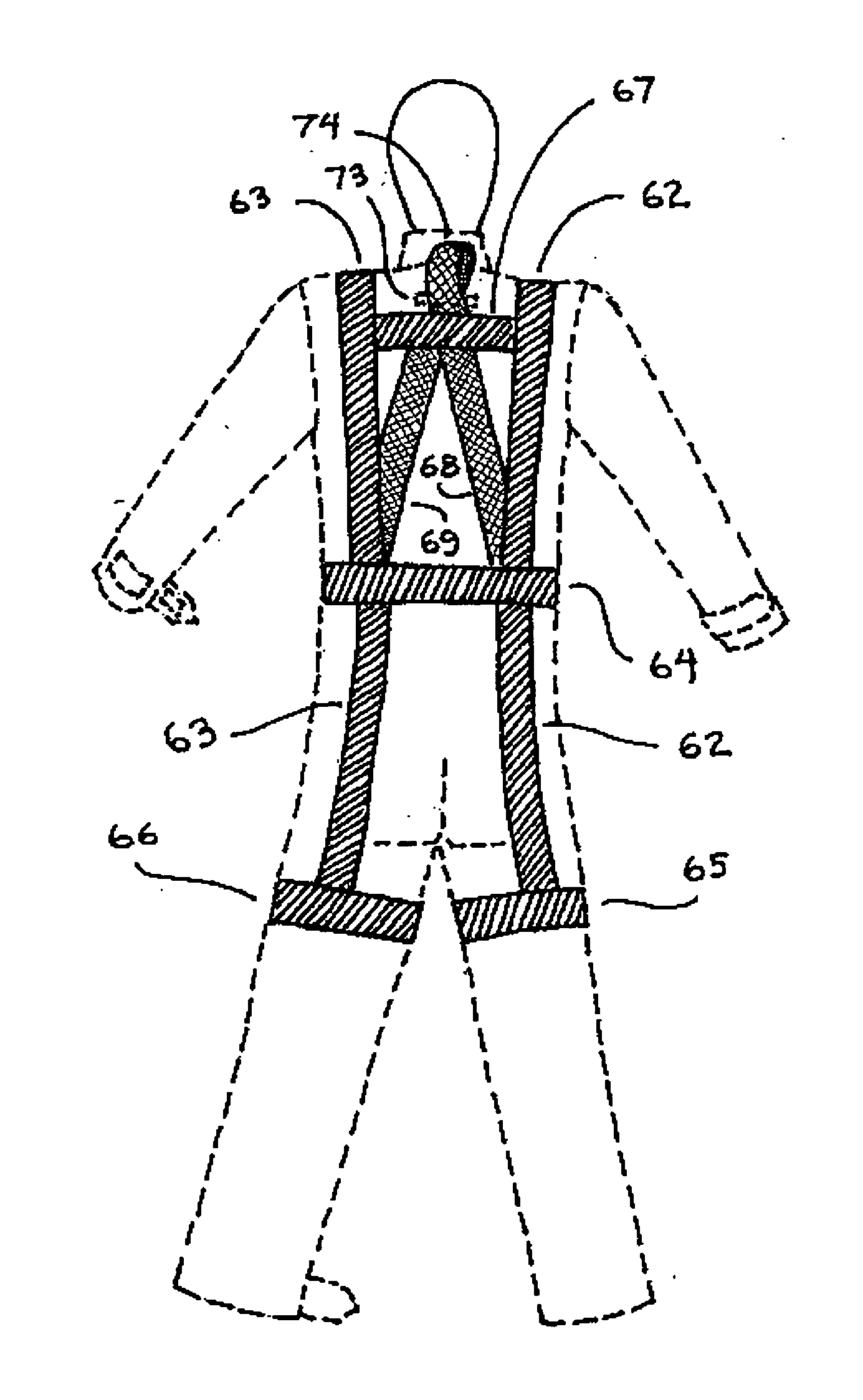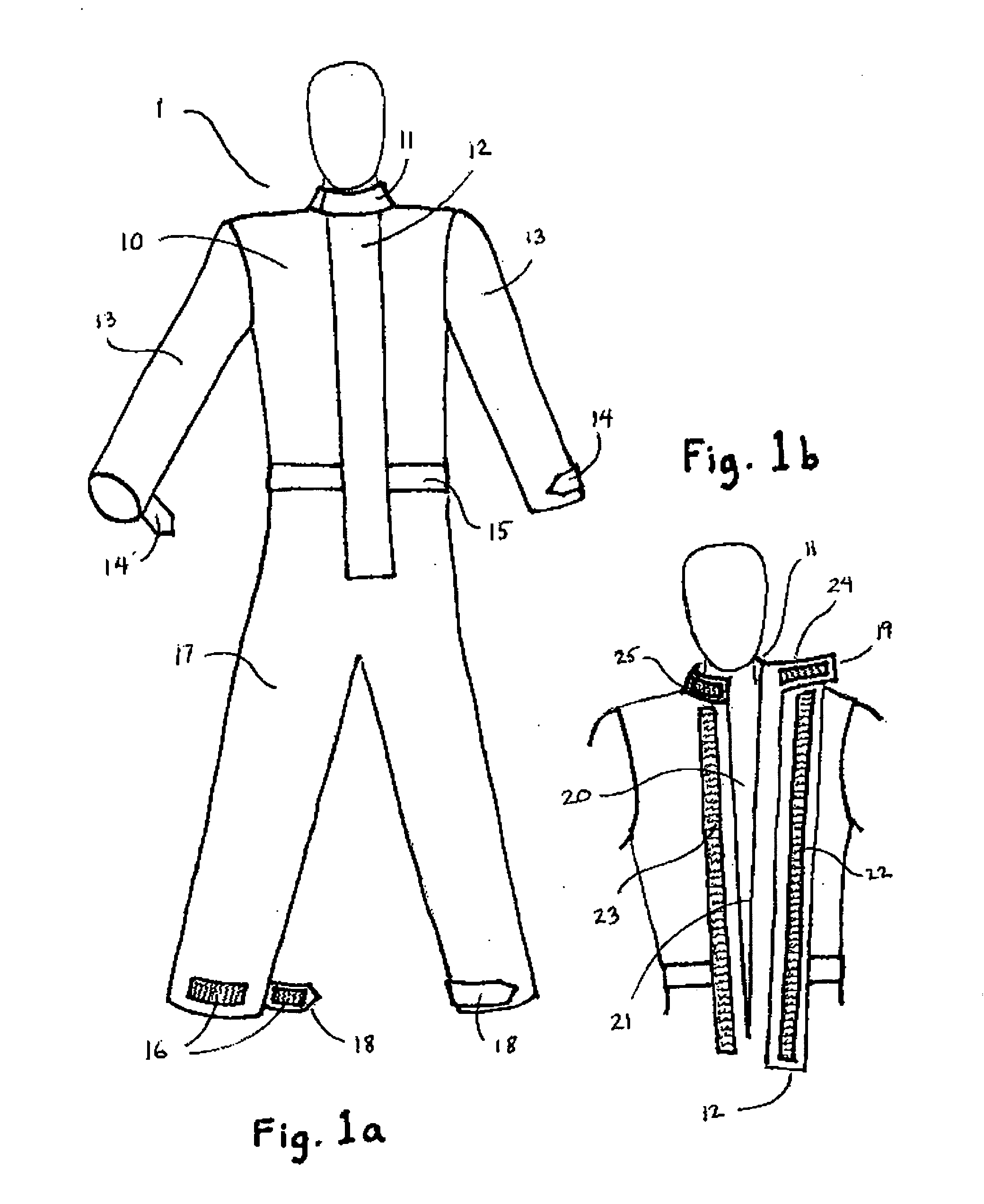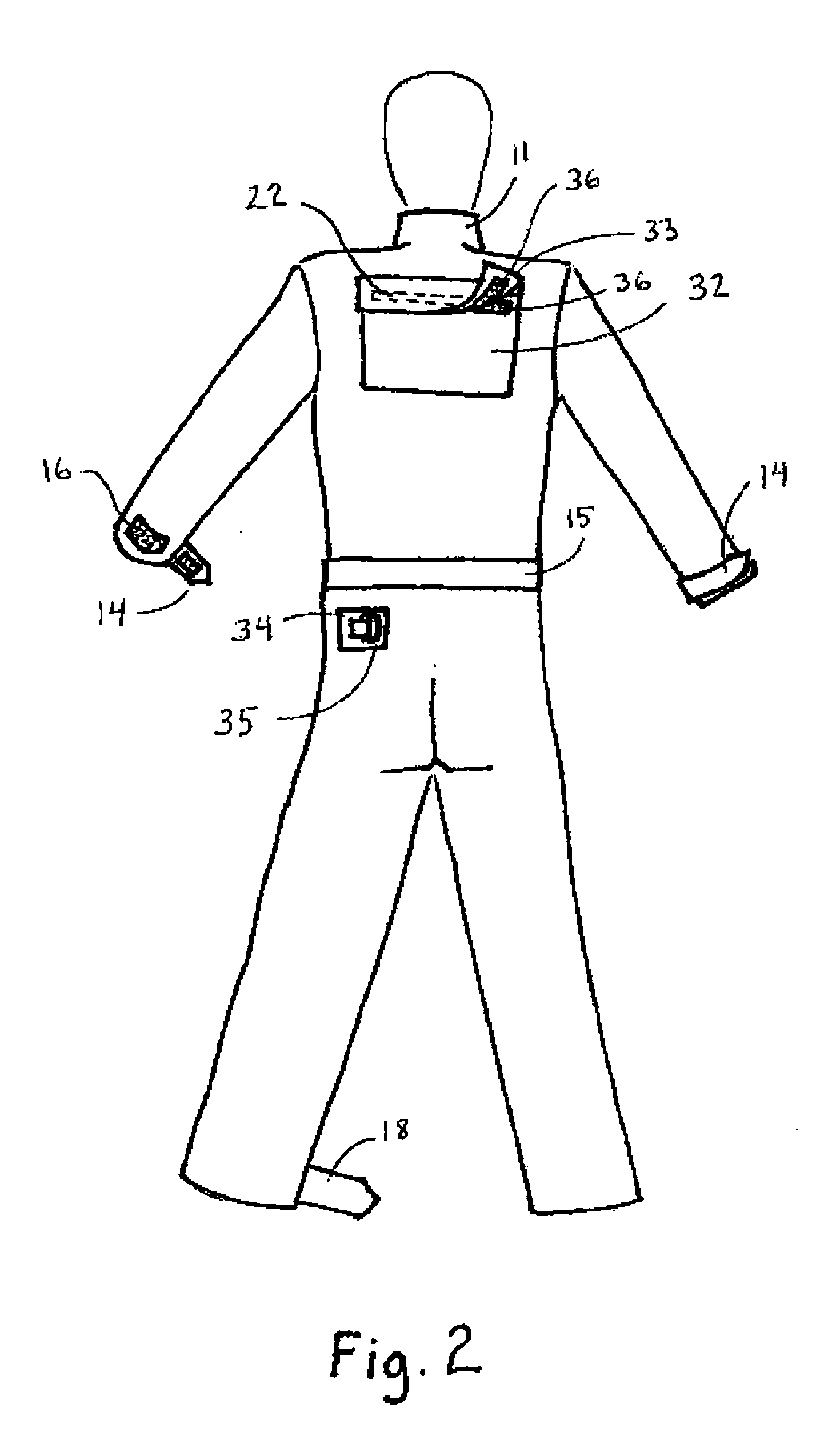Explosion safety garment
a safety garment and explosive technology, applied in the field of suits, can solve the problems of neck injuries, further injury to the wearer, and inability to integrate a fire and explosion protection suit with a built-in extraction harness, and achieve the effects of preventing the possibility of sparking, creating the risk of explosion, and being easy to stor
- Summary
- Abstract
- Description
- Claims
- Application Information
AI Technical Summary
Benefits of technology
Problems solved by technology
Method used
Image
Examples
Embodiment Construction
[0031]FIG. 1a shows a front view of the flash suit 1. The garment is a single-piece suit having a torso portion 10, an opening collar 11, a front opening 12, arms 13, wrist closure tabs 14, waistband 15, legs 17, ankle closure tabs 18, and a hook-and-loop panel 16 mounted on the ankle. The hook-and-loop panels described herein are complimentary panels of hook panels and loop panels which, when pressed together, stick together. These hook-and-loop fasteners are commonly referred to by the trademark “Velcro”. In this application, the choice of hook or loop panel for a particular closure is not important, so the complimentary panels are referred to by the same reference number, 16. The wrist closure tab 14 is placed near the end of the arm or sleeve 13, and by pulling the tab 14 and fastening it to its respective panel 16 (the wrist panel 16 is not seen from the front of the garment and is not shown in FIG. 1, but may be seen in FIG. 2), the wrist portion of the sleeve 13 may be wrappe...
PUM
 Login to View More
Login to View More Abstract
Description
Claims
Application Information
 Login to View More
Login to View More - R&D
- Intellectual Property
- Life Sciences
- Materials
- Tech Scout
- Unparalleled Data Quality
- Higher Quality Content
- 60% Fewer Hallucinations
Browse by: Latest US Patents, China's latest patents, Technical Efficacy Thesaurus, Application Domain, Technology Topic, Popular Technical Reports.
© 2025 PatSnap. All rights reserved.Legal|Privacy policy|Modern Slavery Act Transparency Statement|Sitemap|About US| Contact US: help@patsnap.com



